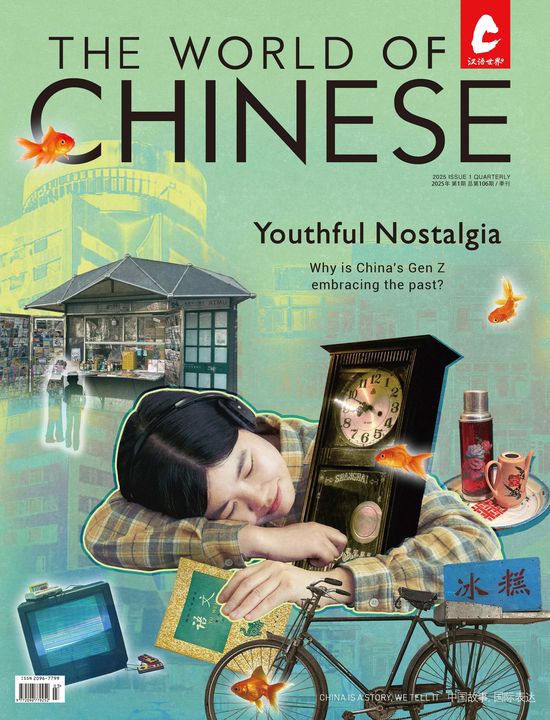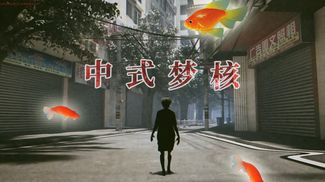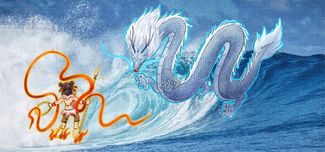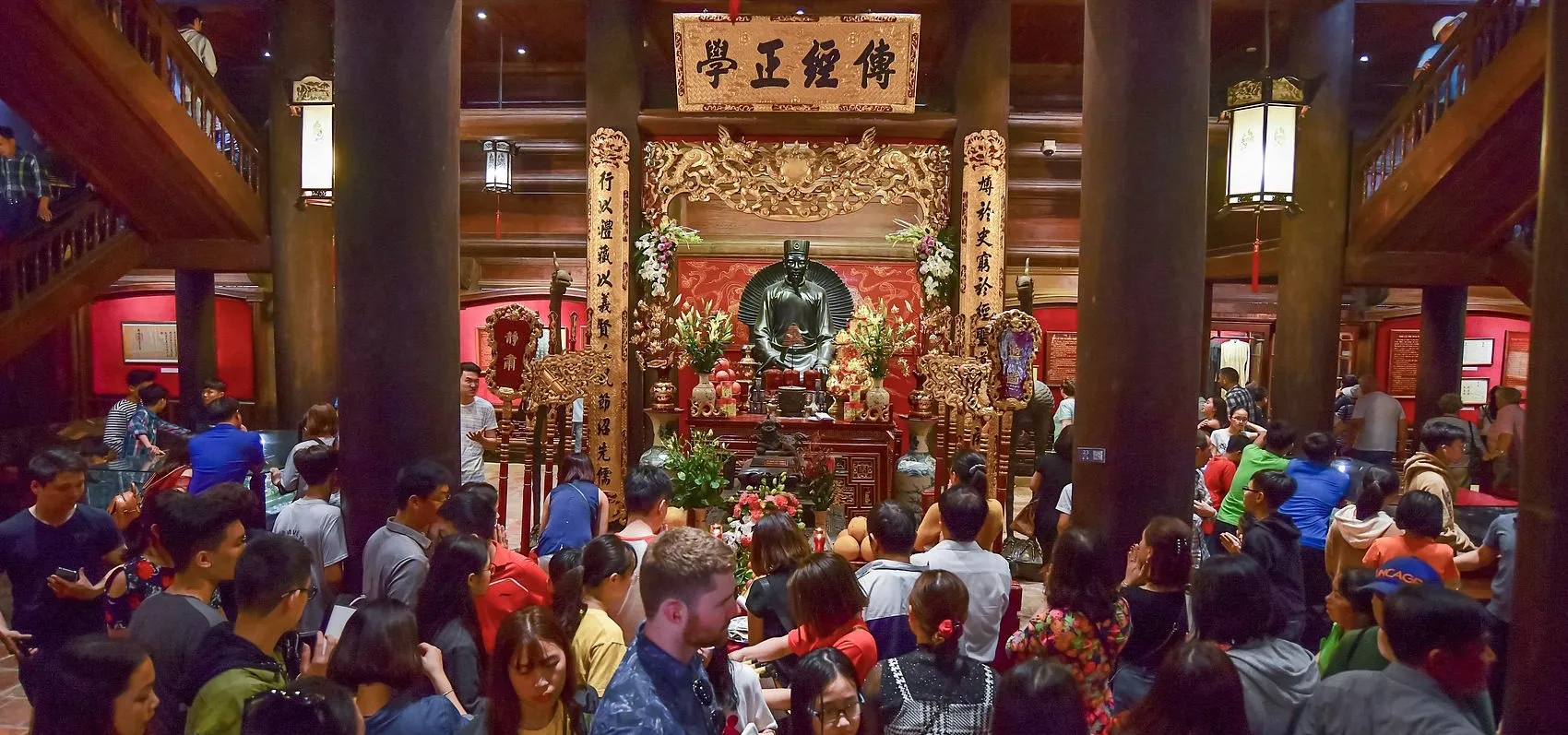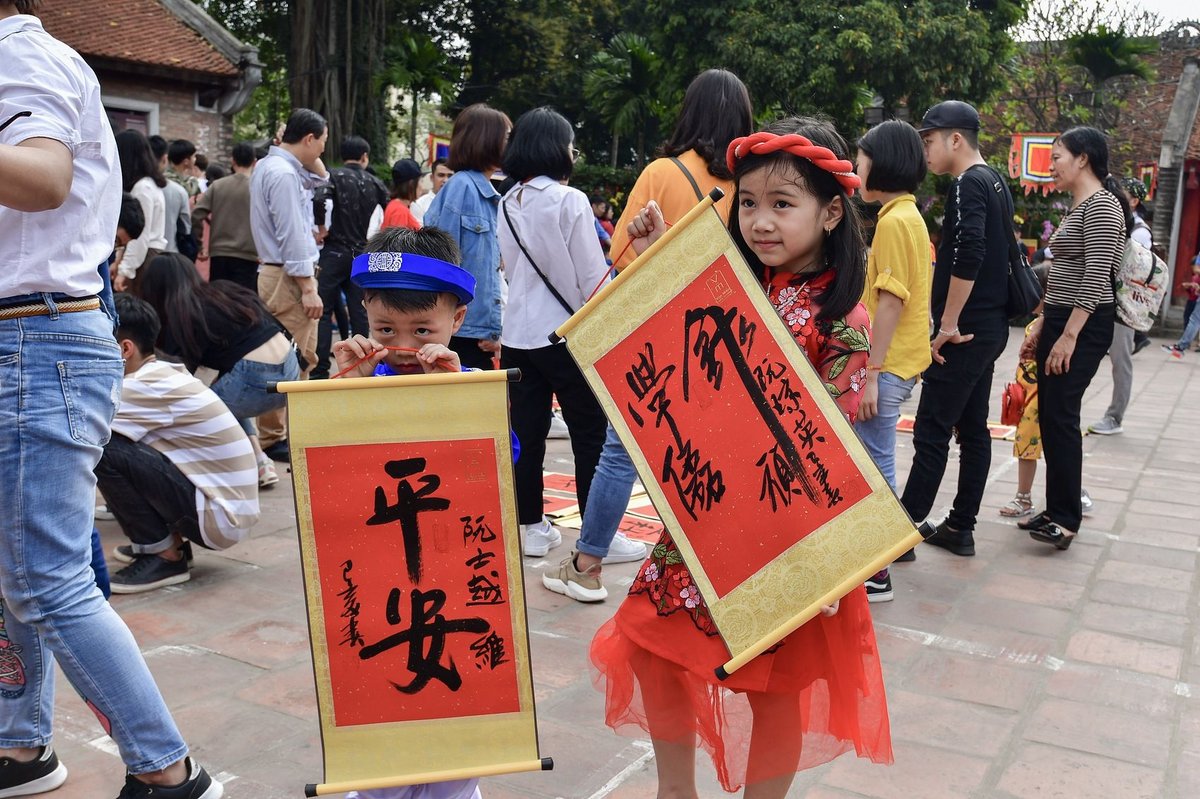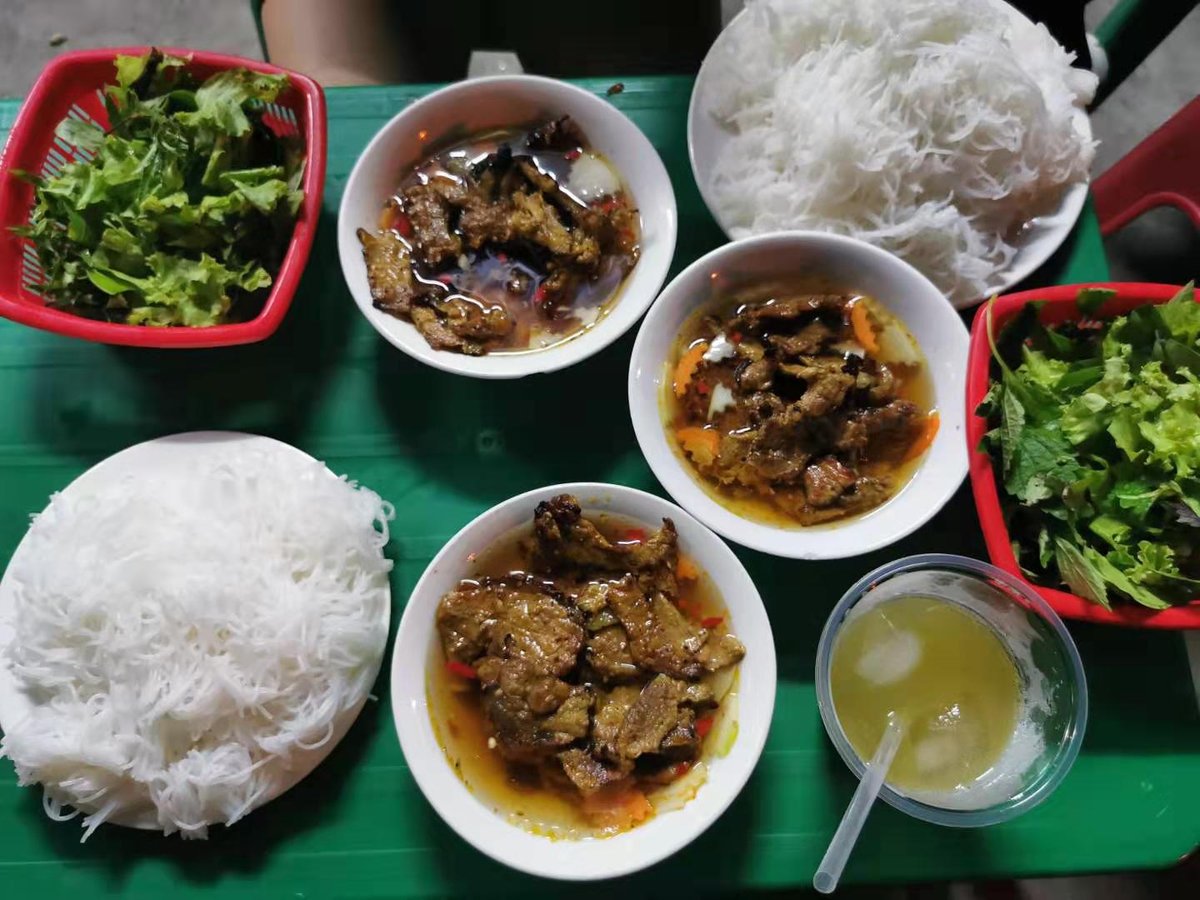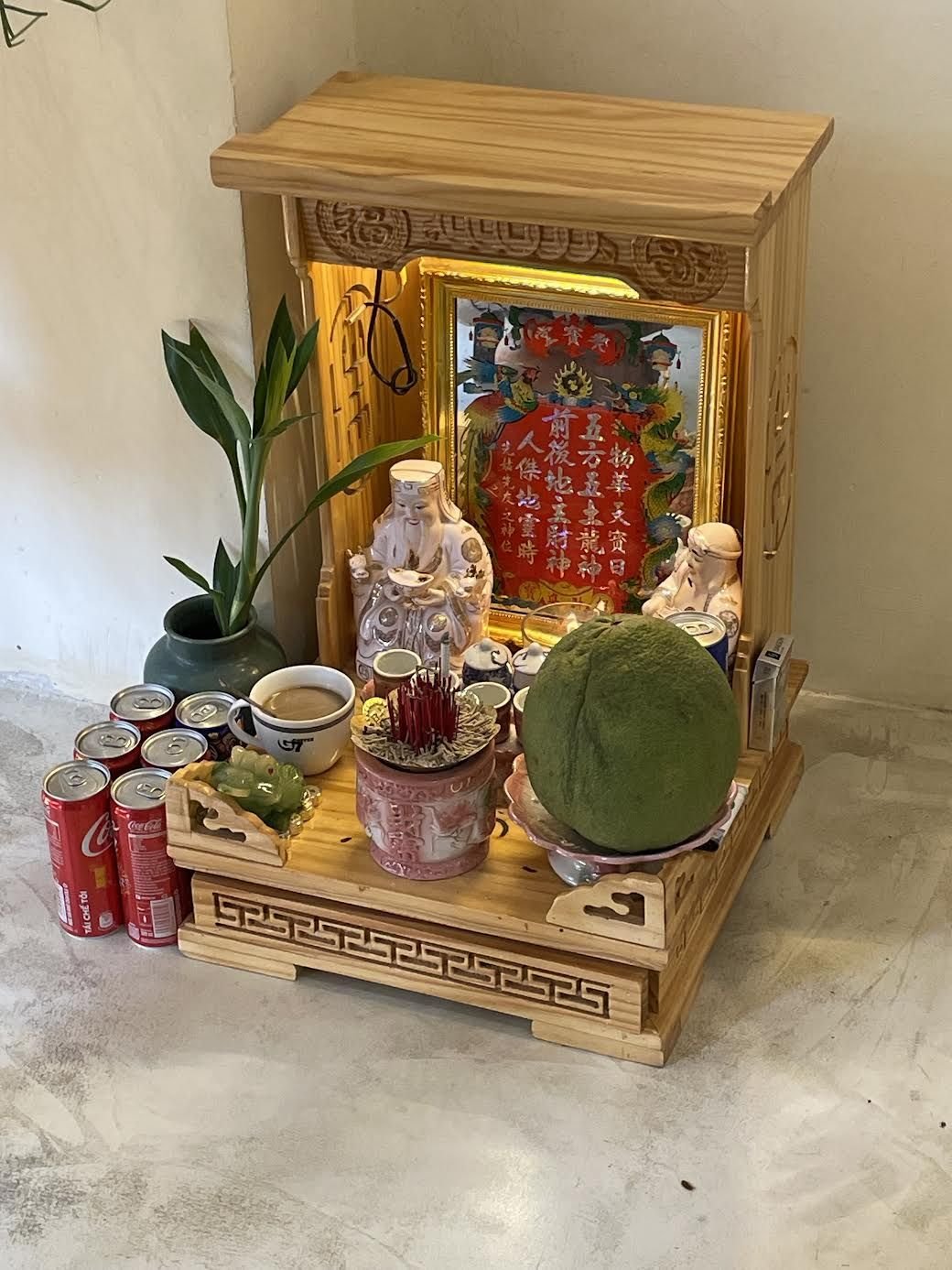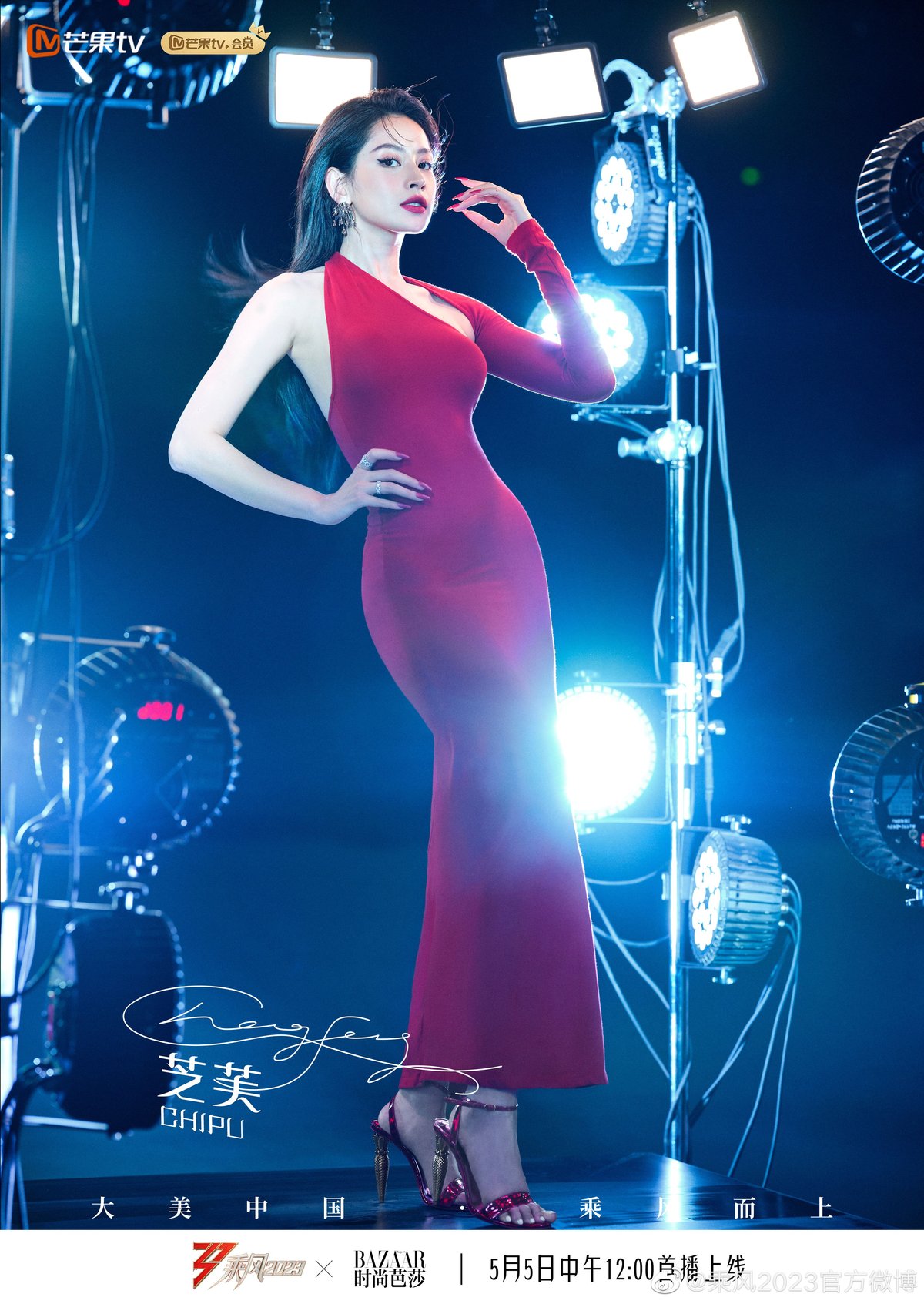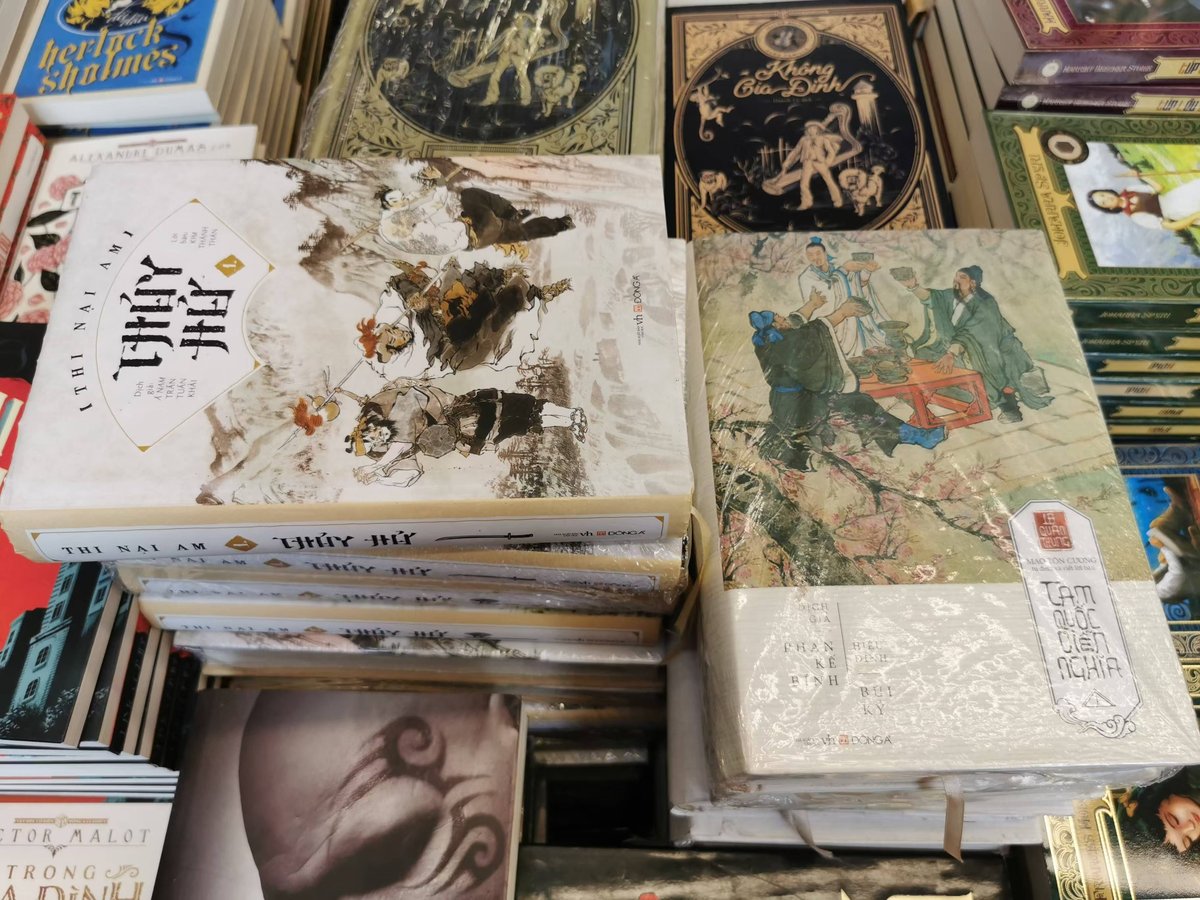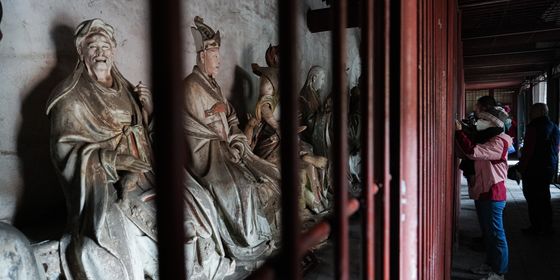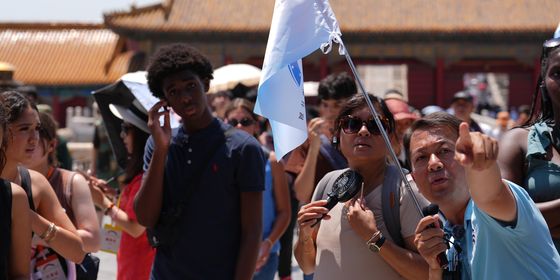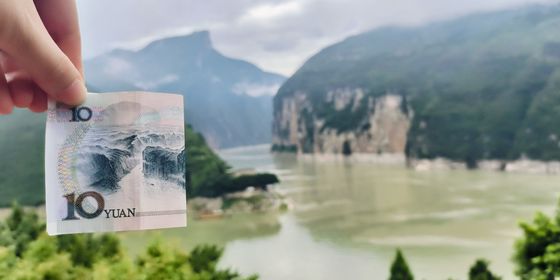More than a hundred years ago, the Vietnamese stopped using a logographic script, with its characters borrowed from Chinese. But traces of the old language are everywhere, hinting at a shared history that continues to express itself in contemporary times.
Stepping off the plane in Hanoi, the capital of Vietnam, I was immediately struck by the strange yet familiar words around me. Having never studied Vietnamese before, I was surprised that I could recognize some signs at the airport because of their resemblance to Chinese: hải quan for customs, which in Chinese is hǎiguān (海关), hộ chiếu for passport (in Chinese, 护照 hùzhào).
Scanning other signs and reading them out aloud, I was also able to decipher nhà vệ sinh (toilet, 卫生间 wèishēngjiān) and kiểm tra an ninh (security check, 安全检查 ānquán jiǎnchá). The syntax—the order of nouns and adjectives—reminded me that Vietnamese and Chinese languages have distinct origins: The former belongs to an Austroasiatic language family, while the latter is a Sino-Tibetan language. However, the shared vocabulary testifies to a long history of cultural exchange across the border.
My friend Trang picked me up from the airport on a motorbike, and we rode to our first sightseeing destination in Hanoi: the Temple of Literature. Founded in 1070, this temple dedicated to Confucius was once the site of Quốc Tử Giám, where students studied Confucian philosophy and literature, and the site of the Imperial Examinations, where they were tested on the knowledge.
Read more about the evolution of the Chinese language:
- Letters of Revolution: The Failed Movement to Eradicate Chinese Characters
- From Radical Codes to Predictive Text: The Evolution of Chinese Input Systems
- Two-Way Communication: How China Adopted Japanese Terms to Discuss Modernity
“Can you understand these Chinese characters?” Trang pointed to the plaque above a statue of a scholar surrounded by flowers and incense.
“Of course,” I replied. “It says 传经正学 (chuánjīng zhèngxué, passing down the classics and promoting proper teachings).”
A Vietnamese language teacher and history buff, Trang gave me a crash course on writing scripts in Vietnam: Chinese characters were introduced in Vietnam in 111 BCE when Emperor Wu of the Han dynasty (202 BCE – 220 CE) took control of northern Vietnam, and from then on, most official documents and texts in Vietnam were written in literary Chinese, the language of Confucius and his disciples, with Chinese characters, or chữ Hán. This endured until the early to mid-20th century, when the Latin alphabet script for Vietnamese, developed by a Portuguese missionary in the early 17th century, replaced the Chinese script.
Walking around in the lush courtyard of the temple dotted with banyans and plumerias, and grand halls decorated with orange tiles, I thought about how students here spent years mastering an ancient form of Chinese and perfecting their calligraphy, yet the languages they spoke daily left few traces in history. In a way, this is similar to what happened in China and in Europe: Spoken and written Chinese remained different until the New Culture Movement in the early 20th century, which advocated writing in the vernacular, and for centuries, European aristocrats and scholars wrote in Latin instead of the vernacular.
“Do Vietnamese students today still have to study chữ Hán (Chinese characters) to read classic Vietnamese literature?” I asked Trang.
“No, only those who specialize in classic literature have to study chữ Hán,” she said. “At school, we only had to study the transliteration of chữ Hán, which is very difficult to understand, and its translation to modern Vietnamese.”
Was it a good decision to change from the Chinese script to the Latin alphabet? Trang and I continued our conversation as we walked outside the temple. I said it was a pity that very few Vietnamese people today have direct access to their rich literary tradition, including the couplets and plaques decorating the site we had just visited. But Trang said she believes the alphabet is the most efficient system to describe the spoken Vietnamese language, and helped increase the literacy rate dramatically at a time when the majority of the population couldn’t read.
Outside the temple gate, grilled meat and lemongrass aroma drew us to a bustling eatery. Over a delicious meal of bún chả, a typical Hanoi dish made of grilled pork, rice vermicelli, and fresh herbs, we reflected on how language and writing, just like food, evolve over time—this restaurant, for example, offered a vegetarian version of bún chả, something one wouldn’t find on the menu 10 years ago.
After lunch, Trang took me to Hoan Kiem Lake and the nearby Old Quarter. A walk in this neighborhood in the heart of Hanoi caused a sensory overload. Cars, motorbikes, bikes, pedestrians, and food trolleys shared the streets named after the goods that used to be traded here: Hàng Gai (Silk Street), Hàng Bông (Cotton Street), etc. In front of boutique hotels and art galleries, street food vendors sold bánh mì, Vietnamese sandwiches, and steaming bowls of phở.
On Hàng Buồm, Sail Street, we walked past the Cantonese Assembly Hall, which used to be the gathering space for a once-thriving Cantonese community. The spacious courtyard with colorful ceramic tiles and lanterns has become a popular site for photo shoots in traditional garments known as áo dài.
“Người Trung Quốc?” The guard at the entrance asked Trang whether I was Chinese. After a confirmation, he turned to me excitedly, repeating, “Tôn Trung Sơn! Tôn Trung Sơn!” I deduced from his body language, along with Trang’s translation, that Sun Yat-sen stayed here during his visits to Vietnam.
In a lot of shops in the Old Quarter, I noticed a small shrine on the floor paying tribute to the deity of the land (土地公 Tǔdìgōng) and the deity in charge of wealth (财神 Cáishén), their names written in Chinese characters. The shrines were adorned with pomelos, Buddha’s hand citrus, and dragon fruit—fitting tributes for deities in a tropical land, I thought.
In a small antique shop, on the wall above ceramic pieces and wooden Buddhist statues, I spotted a calligraphy scroll with characters that looked like Chinese but were incomprehensible to me. “This is chữ Nôm,” the shop owner, a man in his 60s, chimed in as I stared cluelessly. “It was invented by the Vietnamese people to write the Vietnamese language, like Hangul in Korea and kana in Japan, you know?”
He pointed out some characters that he knew: 𠀧, pronounced ba, means three; it is a compound of the character 巴 (bā), which indicates its pronunciation, and 三 (sān), which shows the meaning; 𡗶, pronounced trời, meaning heaven, is a compound of the Chinese characters 天上 (tiānshàng). Trang added that chữ Nôm has never been standardized, so multiple characters often exist to represent the same word, and it is difficult for people who have never studied Chinese writing to learn—she, for one, was puzzled by the owner’s explanation. That’s why chữ Nôm was never widespread in society, even though it enabled and recorded a flourishing of vernacular Vietnamese literature.
Speaking of literature, we decided to check out a Vietnamese bookstore nearby. I was surprised to find the shelf in the center featured novels that I grew up reading: Romance of the Three Kingdoms, Journey to the West, and the historical fantasy literature of Jin Yong (Kim Dung in Vietnamese). “Kim Dung is one of the most widely read foreign authors in Vietnam, but my childhood favorite was Quỳnh Dao’s Hoàn Châu Cách Cách,” Trang said with a wistful smile. Her pronunciation clued me in—she was talking about Qiong Yao’s Return of the Pearl Princess, a story that I, too, was very fond of as a child.
A group of university students in the bookstore overheard our nostalgic chats and eagerly joined the conversation. They were avid fans of Chinese pop literature and took us to the shelves to show us their favorites. One student pointed out thrilling adventure novels like Ghost Blows Out the Light and Grave Robbers’ Chronicles, but another found these tomb-robbing tales too spooky and preferred romantic tales like To the Sky Kingdom and The Journey of Flower. Their enthusiasm extended to Chinese TV, which they kept up with almost in real-time. From TV series about the War of Resistance against Japan to the trending reality show Sisters Who Make Waves, they explained that Vietnamese audiences could access subtitled episodes within hours of their release in China—and dubbed versions just a day or two later. I was struck by how seamlessly media content flowed between the two countries.
Later, Trang and I retreated to the quintessential Vietnamese experience: sipping drip coffee with condensed milk by the roadside. As we sat on tiny plastic stools and watched Hanoi’s buzzing traffic, we discussed why Chinese fiction—both in text and on screen—is so popular in Vietnam. It wasn’t hard to pinpoint the parallels: the Confucian values of filial piety, loyalty, and integrity in historical novels resonate with Vietnam’s own traditions. Palace intrigues featuring queen mothers, empresses, and imperial concubines find echoes in Vietnamese imperial courts. Stories of resistance against overwhelmingly powerful enemies strike a deep chord in a country with its own proud history of resilience, while many Vietnamese also relate to the profound social changes during economic reforms depicted in Chinese TV dramas.
As we finished our coffee and prepared to leave, I saw some people hanging red couplets on their doors in preparation for the upcoming Lunar New Year. The Vietnamese words expressing good wishes were written with bold, flowing ink strokes. “Excellent calligraphy!“ Trang and I said at the same time and laughed at our shared taste. Chữ Hán and chữ Nôm did fall out of use, which made it harder for Vietnamese and Chinese people to read each other’s writings, but threads of shared cultures continue to weave a quiet, deep understanding that transcends the written words.
